Heotjesabap (헛제사밥(맛50년))
11.4 Km 27841 2021-05-07
201, Seokju-ro, Andong-si, Gyeongsangbuk-do
+82-54-821-2944
It is a restaurant that sells Andong’s traditional dishes. This Korean dishes restaurant is located in Andong-si, Gyeongsangbuk-do. The most famous menu is Andong-style bibimbap.
Jebiwon Garden (제비원가든)
11.4 Km 17 2021-03-24
649-2, Jebiwon-ro, Andong-si, Gyeongsangbuk-do
+82-54-855-5455
It is a place where you can enjoy various kinds of good Korean soup. This Korean dishes restaurant is located in Andong-si, Gyeongsangbuk-do. The representative menu is short rib soup.
Puente Woryeonggyo (월영교)
11.4 Km 28996 2024-05-09
Sanga-dong, Andong-si, Gyeongsangbuk-do.
Abierto en 2003, el puente Woryeonggyo (de 387 metros de largo y 3,6 metros de ancho) es el camino pedestre de su tipo en madera más largo de Corea. El puente tiene una leyenda, que habla de una viuda que hizo un par de zapatos de cáñamo a partir de su cabello, mientras sentía la muerte de su esposo. En conmemoración de su pureza y lo noble de su amor, el puente fue designado en el estilo de mituri (cáñamo). En el centro del puente se ubica el pabellón Woryeongjeong.
Buda de Pie Tallado en la Roca de Icheon-dong en Andong (안동 이천동 마애여래입상)
11.4 Km 2229 2021-05-04
Icheon-dong, Andong-si, Gyeongsangbuk-do.
Es una estatua de Buda esculpida en piedra, en cuyo lugar se ubicaba antigüamente el templo Yeonmisa. Sin embargo, en la actualidad, en sus cercanías se ha construido la ermita Jebiwon, por lo que en ocasiones se le llama "Estatua budista de Jebiwon". Es una maravillosa obra de escultura, trabajada en una enorme roca que apunta hacia el oeste, lo más peculiar de esta pieza es que por encima del cuerpo se ha colocado la cabeza del Buda, que supuestamente fue trabajada por separado. Aunque la parte posterior de la cabeza presenta pequeñas deformaciones por daños, en general, se encuentra bien conservada. Esta técnica de esculpir primero el cuerpo y luego trabajar la cabeza y colocarla por encima fue un mecanismo que estuvo de moda durante la era de Goryeo, y debido a los formatos y detalles de la pieza, se supone que es una obra perteneciente al siglo XI.
Seoksong Garden (석송가든)
11.5 Km 58 2021-03-30
539-23, Jebiwon-ro, Andong-si, Gyeongsangbuk-do
+82-54-841-7000
A place with group seats and individual rooms, it is a restaurant well-known for its steamed carp with spicy sauce and bean sprouts. This Korean dishes restaurant is located in Andong-si, Gyeongsangbuk-do. The representative menu is braised carp.
CHIAMGOTAEK [Korea Quality] / 치암고택 [한국관광 품질인증]
11.6 Km 39329 2023-04-13
297-10, Toegye-ro, Andong-si, Gyeongsangbuk-do
+82-54-858-4411, +82-10-3530-4413
Chiam Old House in Anmak-dong, Andong, Gyeongsangbuk-do is an old traditional Korean house once owned by Lee Man-hyeon(pen name Chiam) who was the 11th-generation descendant of “Toegye” Yi Hwang, one of the most prominent Korean Confucian scholars of the Joseon Dynasty and a high-ranking government official during the reign of King Gojong. This house was originally located in Wonchon-ri, Dosan-myeon but was relocated to its current location in 1976 after a flood caused by the collapse of Andong Dam. Chiam Old House consists of 22 rooms, 5 gates, and 1 detached building. The main building is taller than the detached building. One of the unique features of this detached building is that it has both gable roof and gambrel roof on either side. Listed as Gyeongsangbuk-do Folklore Material No. 11, Chiam Old House now serves as a guesthouse for those wishing to experience an old traditional Korean house. The rooms that are open to guests are “Seongmyeongjae,” “Gyeongeopjae,” and “Nakseongdang.” The large room called “Bakkatchae,” or outer building, is the most comfortable one to stay in for a night, since it's furnished with kitchen, TV, air conditioner, and bathroom. “Seongmyeongjae” means “honesty and integrity” in Korean. It’s an “ondol (Korean floor heating system)” room typical of any traditional Korean house, where you have to sleep on the floor. "Gyeongeopjae" is the most popular one among the guests, and its name means “unselfish and reverent.” The rooms next to the gate called “Ilgeonjae,” “Seokcheonjae,” and “Hakgujae” located along the wall are great places to stay if you want to see the surroundings and the old house at the same time. “Jamnyongdang” on the east side of the main building is named after the small pond in the yard, and it means “to strive to be a man of virtue like the dragon flying in the sky.” There are lots of beautiful flowers in the small garden in complete harmony with the old house and surrounding mountains, making it a great place to take a leisurely walk as you experience the history.
Confucian Land (유교랜드)
11.7 Km 1690 2024-05-07
Gwangwangdanji-ro 346-30, Andong-si, Gyeongsangbuk-do
El confucionismo es la raíz de la cultura espiritual de Corea. Para entenderlo bien, es recomendable visitar Confucian Land, ubicado en el Complejo de Cultura y Turismo de Andong. Después de pasar por el túnel de tiempo, se encuentran 6 pabellones, donde se puede observar la vida de los eruditos del siglo XVI y experimentar la cultura confuciana.
An dong gotak Esanru [Korea Quality] / 안동고택 이상루 [한국관광 품질인증]
11.8 Km 14593 2020-09-10
3193-6, Pungsantaesa-ro Seohu-myeon, Andong-si, Gyeongsangbuk-do
+82-54-843-3328 / +82-10-3522-1542
'Andong City in Gyeongsangbuk-do Province is a town of culture and folk traditions where one can trace the long history of eminent families. It is also a symbol of time-honored tradition to the extent that the name Andong reminds people of traditional Korean hanok houses. Isangru, an ancient hanok house with a history of 2,590 years, located in the foothills of Mt. Cheondeungsan, served as a venue for the memorial rite for Kim Seon-pyeong, the progenitor of the Andong Kim clan and a meritorious government official during the reign of King Taejo of the Goryeo Dynasty. Isangru, meaning ‘a tall majestic building built on frosty ground’, is a two-story wooden building with a tiled roof characterized by elegant curves that form a half-hipped shape when viewed from the side. The house consists of two accommodations, Taejangtaesa and Isangru, arranged in a ‘ㅁ’ shape. The large door located in the middle of the ground floor offers an open view of the beautiful natural environment including a pine grove, a pond, and wild flowers. Built in 1750, this hanok house shows its age in its wooden pillars, stone walls, and interiors decorated with wooden engraving on the handrail. Guests can stay in a room heated with wood in winter, or in a tent for a different experience in summer. The house has been well maintained with various repair works, and underwent extensive renovations, including the wallpaper and floors, in 2013. Although it is close to a road, the house is surrounded by old trees, creating the impression that it is situated in the middle of a dense forest. A path runs between ancient pine trees on the road leading to the house. There is a pond with water lilies and white lotus flowers in front of the house, while various species of wild flowers including big blue lily turf, plantain lily, montane aster, and asters come into full bloom around the house in their respective seasons. Fully maintained by the Andong Kim clan, Isangru is a large structure that can accommodate many people and is used to hold clan assemblies. This tall building is also used as a venue for concerts, seminars and traditional hands-on experience programs for students, including tea ceremony, masked dance, natural dyeing, hanji (Korean paper) crafts, and filial duty education programs. The house also offers guests a traditional nobleman’s dining table including various wild vegetable dishes for breakfast. Isangru is popular among Korean and foreign guests who want to experience traditional Korean culture or enjoy a relaxing stay with their parents amid beautiful nature. In addition, it is located between Hahoe Folk Village and Dosanseowon Confucian Academy in Andong, and offers easy access to other nearby tourist attractions including Bongjeongsa Temple, which is the oldest wooden building in Korea and is just three minutes’ drive away, and the two-hour-long Dulegil Trail.
Traditional Resort Gurume [Korea Quality] / 구름에 [한국관광 품질인증]
11.9 Km 372 2023-04-13
190, Minsokchon-gil, Andong-si, Gyeongsangbuk-do
+82-54-823-9001
Gurume Resort is where early traditional Korean guesthouses are located. The traditional Korean houses were relocated to this place after a flood. The resort consists of seven traditional Korean houses named "Baksanjeong,” "Cheongongjeong,” "Gamdongjaesa,” "Palhoedangjaesa,” "Gyenam Old House,” "Seounjeong,” and "Chilgok Old House." Built in the 17th century, "Baksanjeong" is the oldest house there, and it has one guestroom. “Cheongongjeong,” “Gamdongjaesa,” and “Palhoejaesa” were built in the 18th century, whereas "Seounjeong,” "Gyenam Old House,” and "Chilgok Old House" were built in the 19th century. For this reason, the traditional Korean houses look slightly different from each other with one thing in common: they were all renovated and equipped with comfortable modern facilities while preserving most of the features of a traditional Korean house. All the guestrooms are furnished with bathroom with shower and air conditioning system. A hi-tech security system is also installed to ensure the safety of the guests. In addition to Gurume Resort, Happy Traditional Village also has a book café housed in a traditional Korean house as well as dining restaurant, experience rooms, and plaza, allowing the visitors to lodge and engage in a wide range of activities. There is a special package for staying at an old traditional Korean house and using the auxiliary facilities. For more information on various events and news, please visit the Happy Traditional Village website.
MONTRER CHEF (몽뜨레셰프)
11.9 Km 60 2021-03-30
346-124, Gwangwangdanji-ro, Andong-si, Gyeongsangbuk-do
+82-54-813-5454
It is a great place with an outdoor terrace for family gatherings. This family restaurant is located in Andong-si, Gyeongsangbuk-do. The most famous menu is pork shoulder steak.
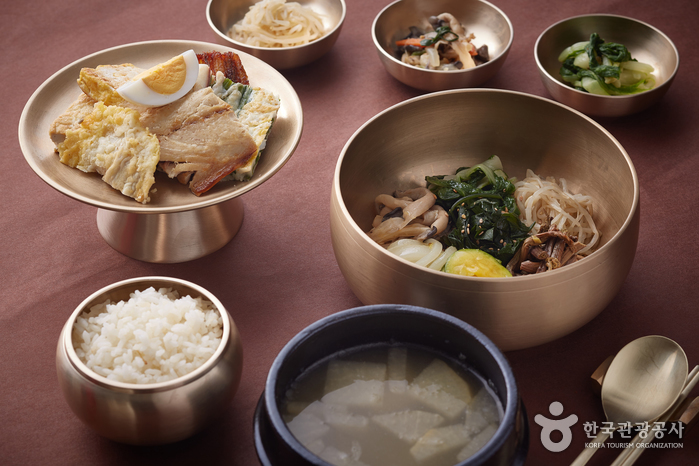
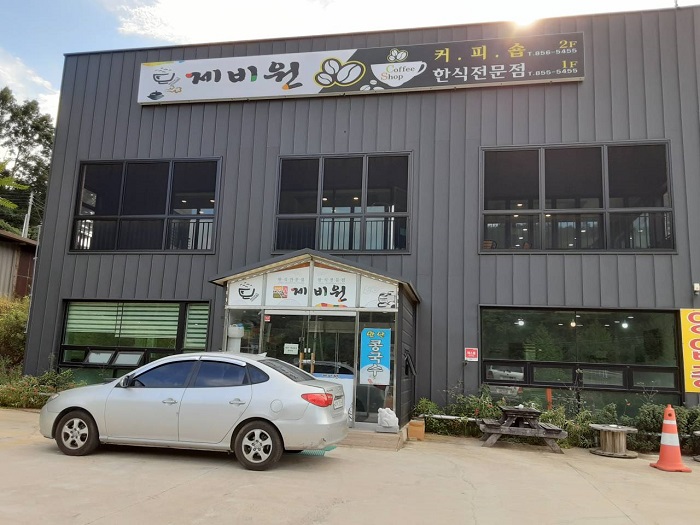

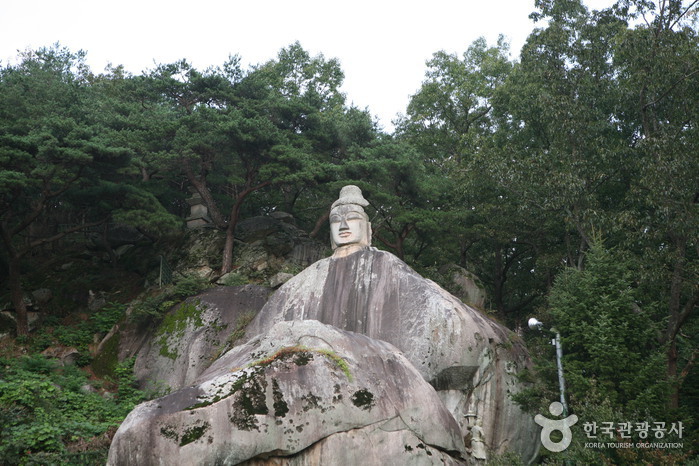
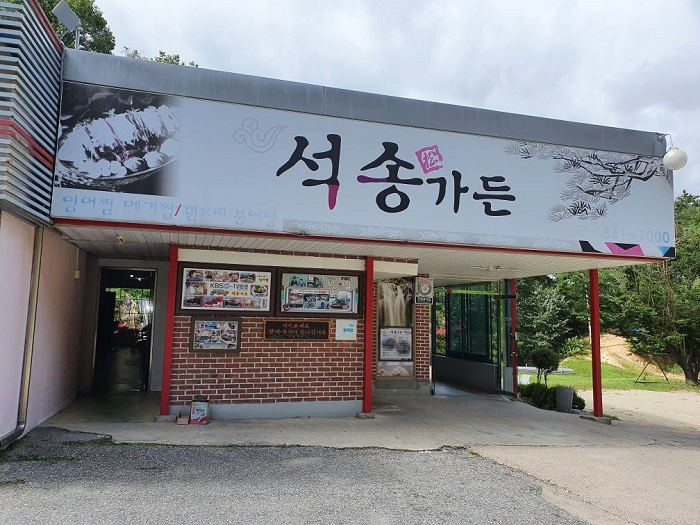
![CHIAMGOTAEK [Korea Quality] / 치암고택 [한국관광 품질인증]](http://tong.visitkorea.or.kr/cms/resource/31/2580131_image2_1.jpg)
![An dong gotak Esanru [Korea Quality] / 안동고택 이상루 [한국관광 품질인증]](http://tong.visitkorea.or.kr/cms/resource/65/2579465_image2_1.jpg)
![Traditional Resort Gurume [Korea Quality] / 구름에 [한국관광 품질인증]](http://tong.visitkorea.or.kr/cms/resource/56/2581156_image2_1.jpg)
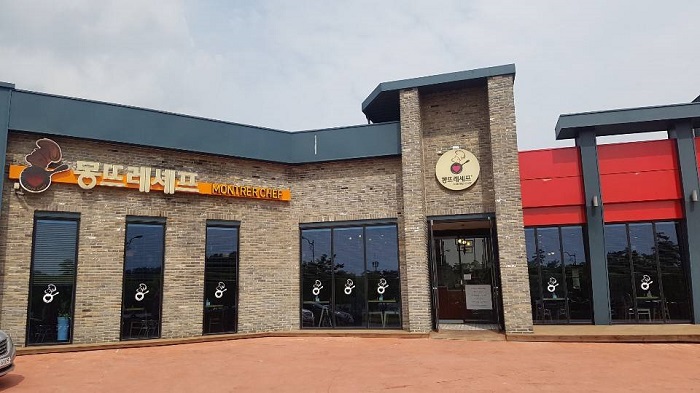
 Español
Español
 한국어
한국어 English
English 日本語
日本語 中文(简体)
中文(简体) Deutsch
Deutsch Français
Français Русский
Русский